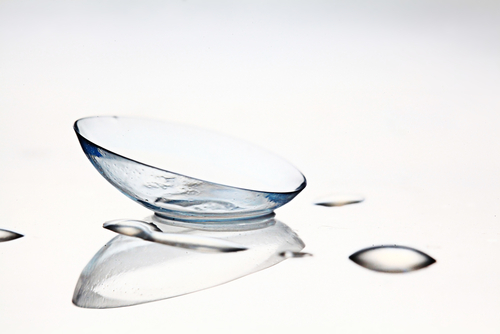Why Contacts Cause Environmental Damage

A lot of people are conscious of how they handle their trash and waste products. Recycling has become more popular recently. This is especially true when it comes to aluminum, glass, cardboard, and plastic.
Plastic can be tricky to recycle and there are some plastics that aren’t welcome in most recycling bins. There are also some plastics that people don’t think of as contributing to much waste at all. Case in point: contact lenses.
Contact lenses are composed of microplastics. Microplastics actually pose a significant environmental threat.
It’s hard to think of something as small as a contact lens is an issue, but so many people use them. All that waste from using and disposing of them adds up.
The biggest issue, though, is the contacts that you flush down the drain. Contacts going into wastewater systems contribute to a significant amount of environmental damage. Keep reading to learn why contacts cause environmental damage!
Low Biodegradability
When you flush things down a drain in your home, they end up in wastewater treatment plants. Wastewater spends at most 172 hours in treatment plants. It is then flushed out into the soil.
Many things that we flush down drains break down when in wastewater treatment. This is due to microorganisms that feed on the waste.
When researchers studied how contact lenses break down in wastewater treatment, they found that they barely degrade after 172 hours. That means that these microplastics go right into the environment. This is where they start causing problems.
Water and Soil Pollution
Since wastewater gets dumped into the soil after treatment, anything left after treatment incorporates with the soil. Microplastics sit in the soil and dry out and break down into harmful particles.
It also means that when it rains, whole contacts or fragments can drain into water sources. Since contacts absorb liquid, they can absorb harmful chemicals.
These can come from both soil and water. These toxins are then left in the microplastic fragments, causing danger to wildlife.
Danger to Wildlife
Leaving microplastic fragments in soil or water causes a danger to wildlife. The toxins that the microplastics absorb can easily make their way up the food chain.
This can cause something of a domino effect. Smaller creatures that feed on infected sources can get infected. They can then infect whatever creature eats them.
Then those creatures will spread the toxins to whatever animal feeds on them. This can eventually lead to a devastating environmental impact, endangering entire animal populations.
Unfortunately, the exact amount of microplastics left in the environment by contact lenses is hard to pinpoint. This also makes it hard to tell how much of a threat contacts currently are.
But researchers do know one thing. Contacts pose a serious threat to the environment.
Be Smart With Your Contact Lens Disposal
So what should you do? The first step is to always dispose of your contact lenses in the trash. Don’t dispose of them down the sink drain or flush them down the toilet.
It may seem easier but it’s the incorrect way to dispose of your contacts. Contacts are small and when you’re done with them, they can get lost down the sink.
If you think that wearing contact lenses can be wasteful, you’re not wrong. Why not consider another option, like LASIK, instead?
Schedule a LASIK consultation at Berg Feinfield in Burbank, CA today! LASIK is permanent and it can be your way of helping the environment if you’re tired of wearing contact lenses that aren’t helping the planet we live on.








